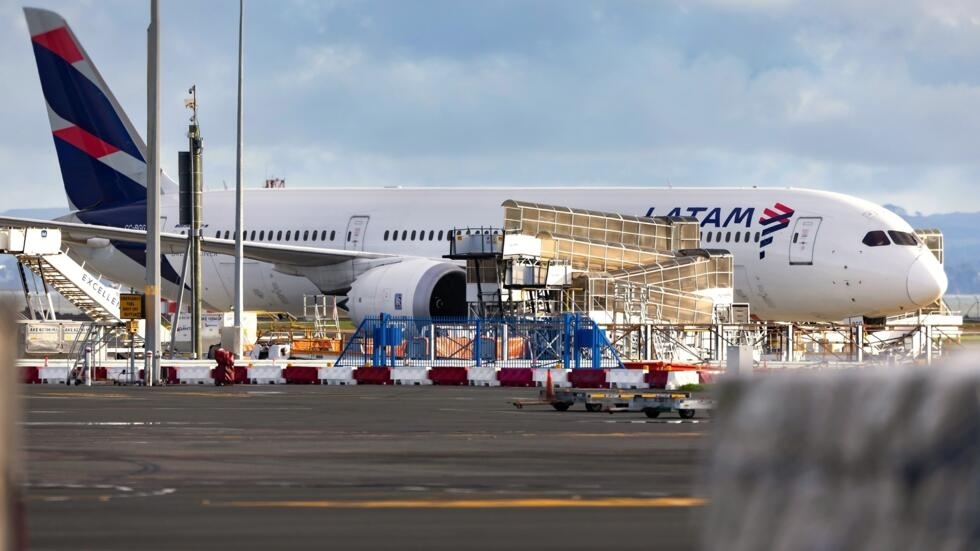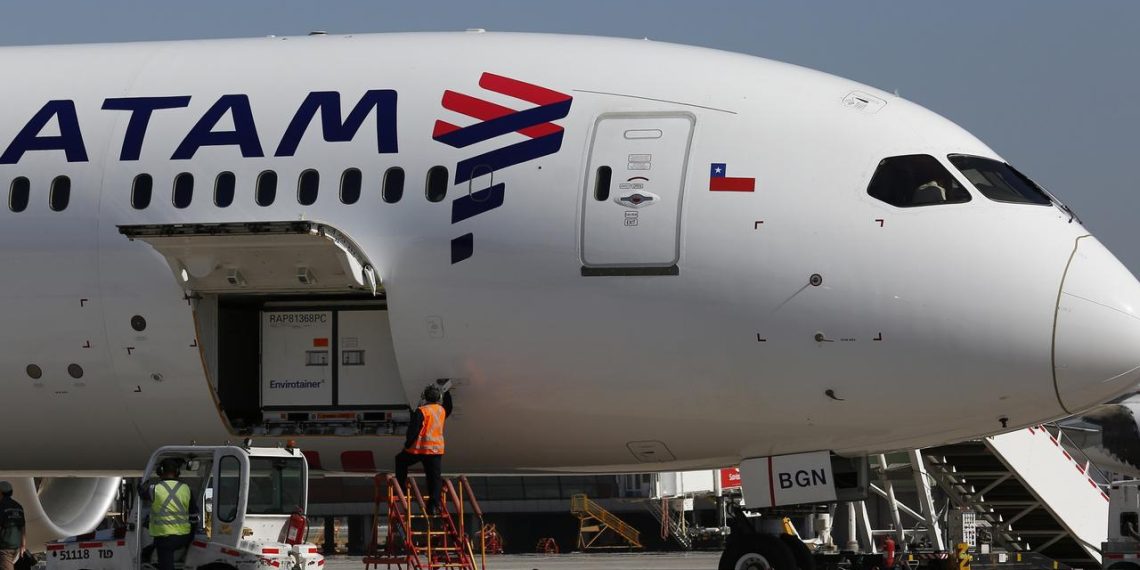New Zealand’s Transport Accident Investigation Commission (TAIC) announced on Tuesday its acquisition of the cockpit voice recorder and flight data recorder from a LATAM Airlines Boeing 787. The move follows an incident on a Sydney-Auckland flight that resulted in over 50 injuries.
The airline and passengers recounted a sudden mid-air drop experienced by the plane carrying 263 passengers and nine crew members.
Brian Adam Jokat, a Canadian citizen residing in the UK and a passenger on the flight, described the disorienting scene: “My neighbor who was in the seat two over from me, there was a gap in between us, as soon as I woke I looked and he was on the ceiling and I thought I was dreaming.”

Photographs taken by Jokat revealed damage to the airplane’s ceiling, where passengers reportedly collided during the incident. The New Zealand investigation body stated that Chilean authorities had initiated a probe into the flight and that it was extending its cooperation.
TAIC clarified that due to the occurrence in international airspace, Chile’s aviation authority, Direccion General de Aeronautica Civil (DGAC), holds jurisdiction over the inquiry. The agency affirmed its ongoing efforts to collect evidence pertinent to the investigation, including retrieving the crucial black boxes for further analysis.
LATAM Airlines, headquartered in Chile, had not responded to inquiries regarding the handover of the black boxes at the time of reporting. The airline, however, expressed its commitment to cooperating with authorities to unravel the cause behind the alarming flight deviation.

While the reason for the sudden trajectory change remains undisclosed, aviation safety experts underscore the necessity of comprehensive investigations, as accidents often stem from a combination of factors.
New Zealand’s Civil Aviation Authority pledged its support for the investigation if needed, echoing the sentiment of collaborative efforts.
The incident has reignited discussions concerning cockpit recording lengths within the aviation industry, particularly following the revelation of overwritten voice recorder data in the Alaska Airlines Boeing 737 MAX 9 jet incident in January.





